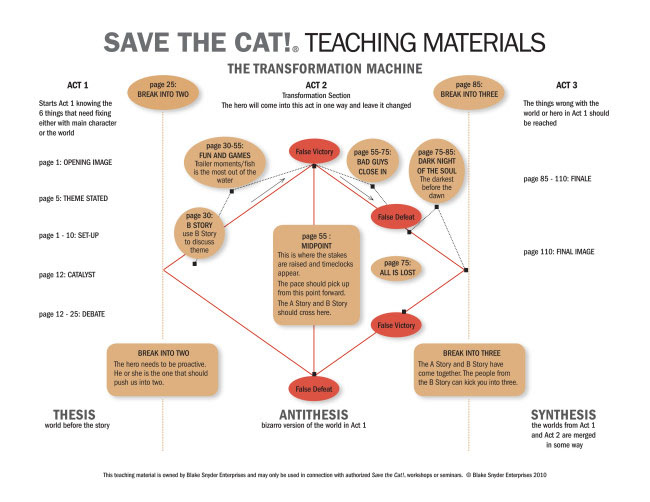Save The Cat Genres

A summary of the book. Save The Cat. The last book on screenwriting that you´ll ever need. By Blake Snyder. Summary by Kim Hartman. This is a summary of what I think is the most important and insightful parts of the book. Save the Cat! Title: Genre Date: Save the Cat! Title: Genre Date: #1, 4, 6, 9, 11, 13 and 15 are the 7 Key Points for writing the Short Pitch Outline: A good logline contains type of hero (person with adjective that describes him), antagonist (ditto) and the hero’s compelling primal goal with irony and creates a vivid image of possibilities.
ByonJuly 1, 2016in,Our workshops are always a great place to “test the waters” of an idea to see if there really is a story lurking in the shadows awaiting to be told – and told in the best way possible. Titan quest gold edition patch. Part of what we do in the workshops is discover what truly is the “best way possible” to tell that story.While it can be a process to find what that is, one way to play around with your idea is figuring out what your story’s genre is.
Today I’m going to share some secrets with you about how to write in the movie genre called “Monster in the House”.The late, great Blake Snyder can be credited with bringing this term into popular phraseology amongst screenwriters. Basically it is the kind of movie where there is a Monster in a House.
Many horror movies use this genre, but so do many other kinds of film. For example, Blake says in his excellent books “Save the Cat” and “Save the Cat Goes to the Movies” that the good ol’ Monster in the House includes such films as “Jaws”, “Independence Day”, “Scream”, “Single White Female”, and even “Fatal Attraction”.So how does this go? Well, put simply, Blake says you must have a Monster, a House, and a Sin committed by one the chartacters that invites the Monster into the House.
For example, in “Jaws” it is the Mayor’s refusal to close the beaches, out of fear that it will damage tourism on the island, that invites the great white shark to keep munching on the locals.Alfred Hitchcock’s The Birds starring Tippi Hedren. Can you spot the “Monster” and the “House” in this movie? Extra marks if you can remember what the “Sin is, too!Blake’s books include a whole host of other great observations about this genre and others and I encourage you to read them all. However I thought I would apply this to my own latest screenplay while I was working on it.
The result was that I may have come up with a definitive “blueprint” for the Monster in the House genre.This may or may may not make sense without reading Blake’s books. However, you can find some illuminating examples by visiting his wesbite and using the free dowloads there.Anyway, here goesMONSTER IN THE HOUSE STRUCTURE BLUEPRINT1. SetupThe House is introduced and described. The Hero’s weakness is also introduced. Don’t forget to Save the Cat!2. CatalystThe Sin is committed, ultimately (but not necessarily there and then) inviting the Monster into the House.3. DebateResistance of whatever is the catalyst by the Hero.4.

Save The Cat Story Genres
Break into Act Two/Turning Point # 1The main conflict with the Monster begins.5. B StoryThe Hero and another character interact.6. Fun & GamesHide and Seek with the Monster in the House.7. MidpointStakes are raised. The Fun is now over. A and B stories cross. Kiss at 60?8.
Bad Guys Close InTurn, Turn, Turn as one by one the Monster kills off the Hero’s allies and generally makes things harder for them.9. Rock BottomThe Sin is finally exposed. The Whiff of Death occurs.10.
Dark Night of the SoulDespair. Monster appears victorious.11.Break Into Act ThreeThe solution!12.
Final ChallengeThe Hero combines his weakness with what he has learned during the story to defeat the Bad Guy (and optionally Save the Cat if not done before).13. ResolutionSurvival, basically. Optionally you may show how the Hero has overcome his weakness.So there it is. I’d be interested in knowing what anyone else thinks about this. But it seems general enough to apply to pretty much any Monster in the House script. Next time I may even break down a popular movie into these component parts to see if it does work all the way through. Until then, keep writing!